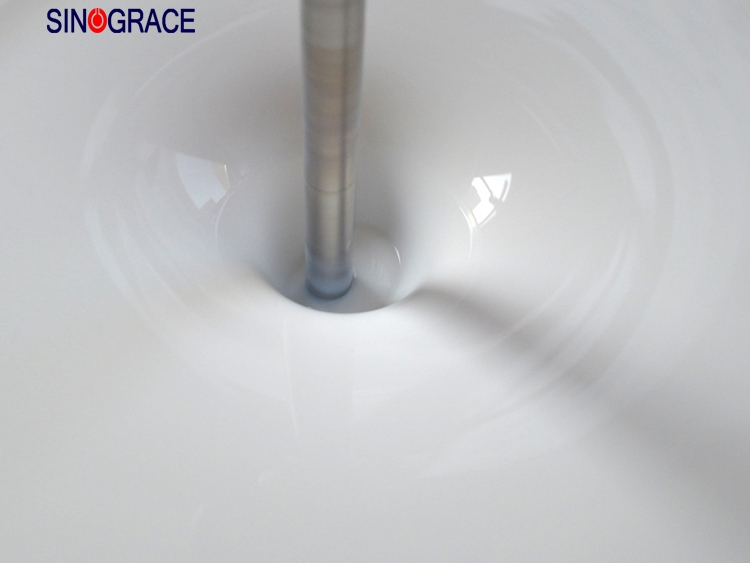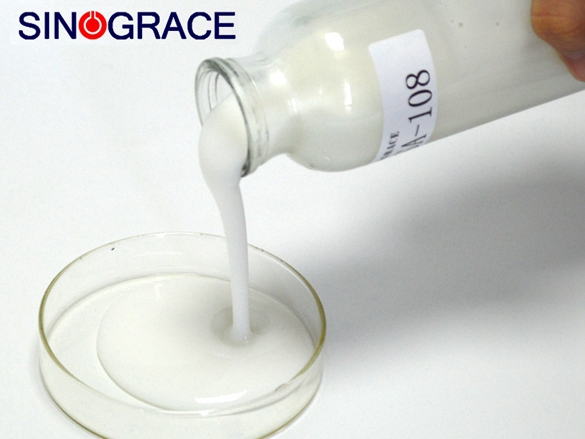
2024-05-09
Water-based ink is referred to as ink, and flexible water-based ink is also known as liquid ink, which is mainly made of water-soluble resins, organic pigments, solvents and related additives by composite grinding processing. Water-based ink is especially suitable for tobacco, wine, food, beverages, medicines, children's toys and other packaging and printing products with strict sanitary conditions. Main components Water-based ink is composed of binder, pigment, additives and other substances of uniform slurry substance. The binder provides the necessary transfer properties of the ink, and the pigment gives the ink its color. Water-based ink binder is mainly divided into two types: water dilution type and water dispersion type. There are many types of resins that can be used in the former, such as maleic acid resin, shellac, maleic acid resin modified shellac, ulatan, water-soluble acrylic resin and water-based amino resin. Water-dispersed binder is obtained by polymerization of emulsified monomer in water, it is a two-phase system, in which the oil phase is dispersed in the water phase in a granular form, although it can not be dissolved by water, but it can be diluted by water, so it can also be considered as water-in-oil emulsion. Classification Modern inks are mainly divided into four categories according to the type of ink: Relief printing ink A type of ink used for printing books, newspapers, picture albums, bills, accounts, etc. The main feature of letterpress printing is that the inked part of the printed page is protruding from the non-inked part. Letterpress ink according to the type of printing machine and the use of printing products are divided into lead printing ink, copper printing ink, rotary letterpress ink, flexible letterpress ink. planographic printing ink A type of ink suitable for lithographic printing. Each part of the lithographic printing page is basically in a plane, the pattern is oil-wet, the non-pattern is water-wet, and the principle of oil-water repulsion is used for printing, so the lithographic ink must have water resistance. According to the process, it is divided into offset ink, web offset ink, flat offset ink, waterless offset ink, iron printing ink, lithographic ink. Gravure ink A type of inks suitable for gravure printing. When printing, ink is inked into the patterned part of the page, erase or scrape the ink of the non-patterned part, and then print. There are engraving intaglio ink and photogravure ink. Screen printing ink A type of ink that is printed by leaking through the plate's mesh onto the substrate surface. Screen printing ink is divided into stencil printing ink and screen printing ink. Water soluble resin Water-soluble resin or water-dispersed resin is the connection material of water-based ink, which has a great impact on the viscosity, adhesion, gloss, drying and printing adaptability of the ink. Water-based ink is made of water-based polymer emulsion, organic pigments, resins, surfactants and...
read more
2024-05-08
Different processing methods will cause different fault manifestations, the following we mainly analyze the causes of paper thermit sealing delamination phenomenon under the gravure and solvent-free composite processing methods. The YBB paper aluminum-plastic composite film standard does not specify the composite strength index of the paper aluminum layer in the paper aluminum-plastic composite film, usually we peel the paper layer apart, observe the transfer of paper fibers, if there is a layer of paper fibers left on the aluminum foil surface, it indicates that the composite strength is good at room temperature. Paper aluminum delamination has many manifestations and different mechanisms. When paper aluminum plastic heat sealing, due to the poor heat transfer of paper, it is necessary to set a higher heat sealing temperature, and sometimes the heat is as high as 200℃, which is a greater test for the heat resistance of the rubber layer. In addition, under the action of heat above 200℃, the paper will lose water and produce a certain shrinkage stress, which will aggravate the phenomenon of thermal seal delamination. The YBB paper aluminum-plastic composite film standard does not specify the composite strength index of the paper aluminum layer in the paper aluminum-plastic composite film, usually we peel the paper layer apart, observe the transfer of paper fibers, if there is a layer of paper fibers left on the aluminum foil surface, it indicates that the composite strength is good at room temperature. Paper aluminum delamination has many manifestations and different mechanisms. When paper aluminum plastic heat sealing, due to the poor heat transfer of paper, it is necessary to set a higher heat sealing temperature, and sometimes the heat is as high as 200℃, which is a greater test for the heat resistance of the rubber layer. In addition, under the action of heat above 200℃, the paper will lose water and produce a certain shrinkage stress, which will aggravate the phenomenon of thermal seal delamination. Delamination only appeared in the heat sealing part, and the strength of the parts without heat sealing was good The heat of the hot sealing knife leads to the deterioration of the bonding fastness, which is generally separated from the internal delamination of the adhesive layer, which can be analyzed with PU dyeing agent. Main factor: the heat resistance of the adhesive itself is not enough. Countermeasure: The appropriate adhesive type number should be selected. The crosslinking curing of adhesives is inadequate. Reason: the curing temperature time is not enough, the free water in the paper is too little. Countermeasure: Prolong the curing time and humidify the paper properly. The composite strength of the heat-sealed part and the non-heat-sealed part is poor The amount of glue layer left between the paper surface and the aluminum foil interface is too small Possible factors: The paper absorbency is too strong, the coating amount is low. Counte...
read more
2024-04-30
Leather surface treatment agent Matte resin is a surface treatment agent, mainly used to add a matte effect to the leather surface. The principle is to form a layer of tiny particles on the surface of the leather material, and the refracted light is dispersed, making the surface appear matte. Automotive interior leather market demand analysis As a high-grade and beautiful material, leather has a wide range of uses, but the animal fur that can be used for leather production is limited, which is mainly due to people's protection policies for animals. The production of leather is far from meeting the needs of people. In the context of such characteristics of The Times, artificial leather came into being, artificial leather is also called PU leather (polyurethane synthetic leather), is coated on the fabric PU resin processing. The main features are comfortable feel close to leather, large mechanical strength, many colors, a wide range of applications; Therefore, the frequency of use in the automotive interior industry is very high. In the context of such characteristics of The Times, artificial leather came into being, artificial leather is also called PU leather (polyurethane synthetic leather), is coated on the fabric PU resin processing. The main features are comfortable feel close to leather, large mechanical strength, many colors, a wide range of applications; Therefore, the frequency of use in the automotive interior industry is very high. Leather surface treatment agent matte resin product recommendation Matte coating resins have developed rapidly in many fields. Automobile interior leather matte coating resin, suitable for high-end car seats, instrument panels, steering wheels, ceiling, door armrests, etc. Sinograce Chemical's leather polyurethane matte resin has excellent performance
read more
2024-04-26
First, material selection and preparation To make the resin crack effect, you first need to prepare the resin and pigment. Resin selection of high transparency, high hardness, wear resistance products, pigments can choose mineral pigments or metal pigments, you can also add a small amount of color pigments to prepare a rich color. Second, color mixing Mix the paint into the resin one by one and stir well. Be careful not to add too much pigment, otherwise it will affect the transparency and gloss of the resin. It is best to use a slow stirring speed to avoid excessive foaming. Third, construction modeling Apply the color-adjusted resin evenly to the fabrication panel. When the surface is not dry, you can use a plastic knife or other sharp tool to characterize the shape and direction of the crack on the resin to achieve a more realistic effect. Be careful not to paint too deeply, otherwise it will destroy the overall structure of the resin. Fourthly,Wait for drying After the construction is completed, the resin on the surface needs to be left for a period of time until it is no longer sticky on the surface. Resin drying speed will be affected by the ambient temperature and humidity, generally need to wait for about 24 hours to dry thoroughly. Fifth,Grinding and coating After the resin is completely dry, the surface can be polished more smoothly using a sander, and a layer of protective paint can be applied to the resin surface to increase the luster and hardness of the resin work. The above is the basic steps and skills of making resin crack effect, through different pigment matching and creation methods, you can also make more colorful resin works. If you also like to create and make decorations by hand, try creating resin crack effects to add more fun to your life. Sinograce Chemical provides a variety of water-based resins, acrylic resins, water-based polyurethane, welcome to consult. If you need samples, you can leave a message on the website to apply, and the relevant staff will contact you as soon as possible or call the official hotline: +86 0551 63459511
read moreCopyright © 2015-2024 Anhui Sinograce Chemical Co., Ltd..All Rights Reserved.powered by dyyseo.com
top